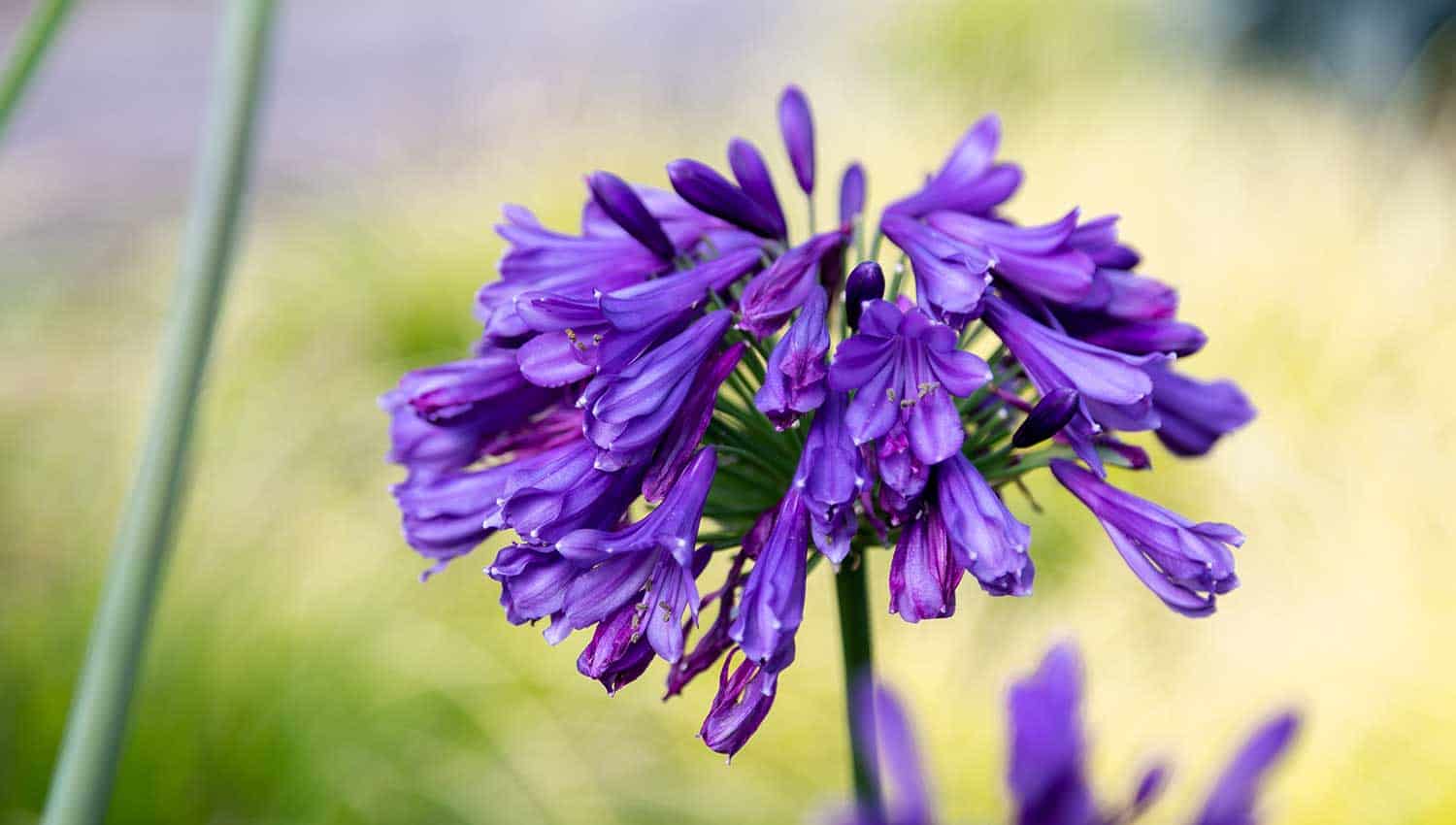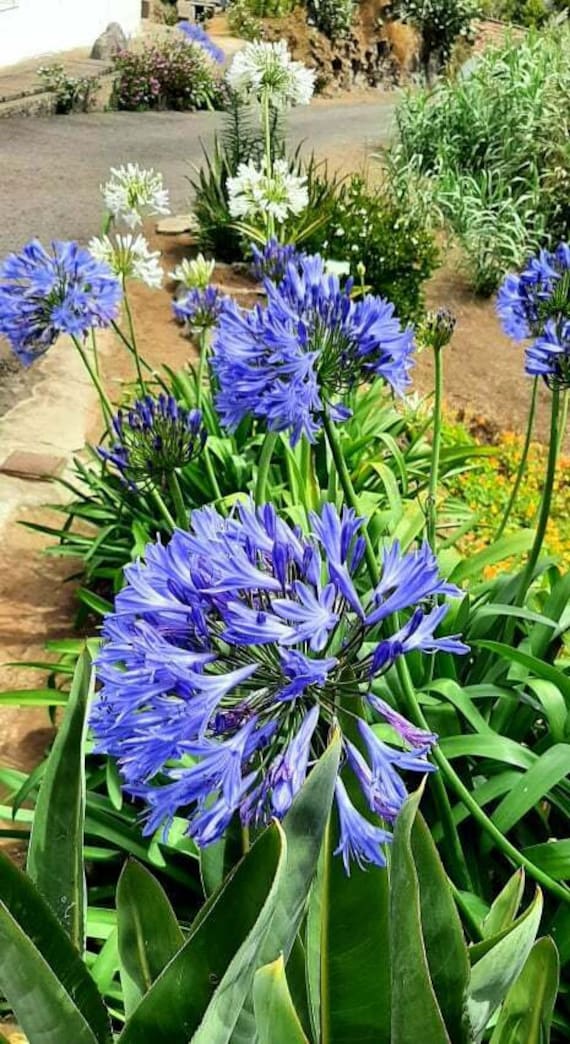Seasonal Agapanthus Treatment: Getting Ready For Winter and Summer season
Seasonal Agapanthus Treatment: Getting Ready For Winter and Summer season
Blog Article
Opening the Mysteries of Agapanthus: A Detailed Exploration of Varieties, Growing Strategies, and Maintenance Practices

Agapanthus, usually shrouded in enigma because of its varied range of varieties and intricate maintenance requirements, offers itself as an enigmatic subject for numerous garden fanatics. With a wide variety of cultivars available, each boasting distinct qualities and development behaviors, understanding the complexities of these plants can be both fulfilling and difficult. As we check out the nuances of growing techniques and delve right into the necessary maintenance practices necessary to support these magnificent blossoms, a world of possibilities unravels for those looking for to grasp the art of growing agapanthus.
Agapanthus Varieties Demystified
Agapanthus ranges show a diverse range of features, making it vital for garden enthusiasts to recognize the distinctions in between them for effective growing. The Agapanthus praecox, or Blue Lily of the Nile, is one more preferred choice, flaunting large spherical collections of blue or white blossoms atop high stalks.
For those seeking a much more small choice, the Agapanthus 'Peter Frying Pan' is an appropriate selection, with its smaller stature and delicate blue blooms. On the other hand, the Agapanthus 'Tornado Cloud' range supplies a remarkable flair with its deep purple blossoms and dark vegetation (Agapanthus). Additionally, the Agapanthus 'Albus' stands apart for its pure white blossoms, developing a stunning comparison in any type of garden setting
Recognizing these distinctions can help gardeners choose one of the most ideal Agapanthus range for their specific demands and preferences, ensuring a vibrant and flourishing yard display screen.
Growing Agapanthus Like a Pro
When planting Agapanthus for ideal development and aesthetic influence, thorough interest to dirt quality and sunlight exposure is critical. Agapanthus grows in well-draining soil with a slightly acidic to neutral pH level. Prior to planting, amend hefty or compressed soil with raw material such as garden compost to boost drain and fertility. Pick a growing area that receives complete sunshine to partial shade, as Agapanthus typically chooses at the very least 6 hours of sunlight daily for robust blooming. When planting, make sure the crown of the plant rests at soil degree to prevent rot and encourage healthy development.

Important Upkeep Tips for Agapanthus
To make certain the continued health and vigor of your Agapanthus plants, what secret upkeep practices should be prioritized throughout the expanding period? Sufficient watering is essential, especially during the energetic development durations in springtime and summer. Agapanthus plants like evenly damp soil however can tolerate brief durations of dry spell as soon as established. Mulching around the plants can help maintain dirt dampness and control temperature. Routine fertilization is important to advertise blooming and overall plant health. Make use of a well balanced fertilizer with a greater phosphorus material to urge flower manufacturing. Deadheading invested blossoms can lengthen the blooming period and boost the plant's appearance. Agapanthus plants profit from division every few years to stop overcrowding, boost growing, and revitalize the plant. Replant the divisions in well-draining dirt improved with natural issue. Watch out for typical parasites and diseases, such as aphids or origin rot, and take punctual action to attend to any type of concerns that may occur. By complying with these upkeep pointers, you can enjoy vibrant and healthy Agapanthus official site plants throughout the expanding period.
Troubleshooting Common Agapanthus Issues
Identifying and immediately addressing typical problems that may impact the wellness of your Agapanthus plants is important for keeping their vigor and charm. One typical problem that Agapanthus might face is overwatering, causing root rot. To prevent this, ensure proper drainage in the dirt and stay clear of waterlogging. On the other hand, underwatering can cause yellowing and wilting of leaves. To battle this, establish a regular watering schedule, ensuring the dirt is damp yet not waterlogged. Agapanthus are additionally prone to pests such as snails and aphids. Regularly check the plants for any kind of indications of problem and treat them without delay with proper methods such as insecticidal soap or natural predators. Additionally, insufficient sunshine can lead to stunted development and fewer blooms. Ensure your Agapanthus receive sufficient sunlight, ideally around 6-8 hours daily. By being vigilant and attending to these common concerns immediately, you can aid your Agapanthus flourish and thrive in your yard.
Optimizing Agapanthus Blooms: Professional Strategies
Enhancing the vibrancy and abundance of Agapanthus blossoms needs a strategic technique that uses ideal expanding conditions and specialist techniques. To make the most of Agapanthus flowers, begin with selecting the right variety for your area and preferred aesthetic. Agapanthus directory selections differ in elevation, flower shade, and flower time, so choose one that matches your yard's needs.
Plant Agapanthus in well-draining soil with enough sunlight exposure. Routine watering, especially during the active expanding period, is important to avoid tension and urge growing.
Feed Agapanthus with a balanced fertilizer to promote flowering. Deadheading invested blooms can reroute the plant's energy into creating brand-new blossoms (Agapanthus). Split jammed clumps every few years to renew the plant and boost flowering
Last but not least, shield Agapanthus from parasites and diseases that can hinder flowering. Implementing these professional strategies will certainly help you attain a stunning display of Agapanthus blossoms in your garden.
Verdict
Finally, the mysteries of agapanthus have been revealed with a comprehensive expedition of ranges, growing strategies, and upkeep methods. By comprehending the various selections readily available, growing them correctly, and complying with important upkeep ideas, one can efficiently cultivate and enjoy these their explanation gorgeous blossoms. By repairing common problems and carrying out expert strategies, one can maximize agapanthus blossoms and develop a spectacular garden display screen. Via correct treatment and attention, agapanthus can flourish and prosper in any yard setup.

When growing Agapanthus for ideal growth and aesthetic influence, thorough attention to soil top quality and sunshine exposure is vital.To grow Agapanthus like a pro, area the plants according to their fully grown size to permit for appropriate air blood circulation and stop overcrowding. Agapanthus plants profit from division every couple of years to protect against congestion, boost blooming, and invigorate the plant.In verdict, the secrets of agapanthus have been unveiled through a detailed exploration of selections, growing techniques, and upkeep techniques.
Report this page